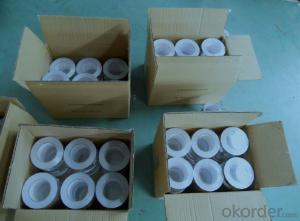Masking tape is a versatile tool that has become an essential part of many painters’ toolkits. It’s a simple yet effective solution for creating clean, crisp lines and protecting surfaces from paint. In this article, we’ll explore the world of masking tape, from its history to its various uses and types, and why it’s considered a painter’s best friend.
The History of Masking Tape
Before we dive into the uses and benefits of masking tape, let’s take a quick trip down memory lane. Masking tape was invented in 1925 by Richard Gurley Drew, an engineer at the Minnesota Mining and Manufacturing Company (3M). He was looking for a way to create a tape that could be easily removed without leaving a residue. The result was a pressure-sensitive adhesive tape that could be used for a variety of purposes, including painting.
The Science Behind Masking Tape
But what makes masking tape so special? The secret lies in its adhesive. Masking tape is designed with a light adhesive that allows it to stick to surfaces without causing damage when removed. This is achieved through a combination of adhesive chemistry and the use of a crepe paper or cloth backing, which provides a gentle grip without leaving behind any sticky residue.
Types of Masking Tape
There are several types of masking tape available, each with its own unique properties and uses. Some of the most common types include:
– General Purpose Masking Tape: This is the most common type of masking tape and is suitable for a wide range of applications, including painting, woodworking, and automotive work.
– Artist’s Masking Tape: As the name suggests, this type of tape is specifically designed for artists and is known for its easy removal and clean lines. It’s also acid-free, which makes it safe for use on delicate surfaces.
– Double-Sided Masking Tape: This tape has adhesive on both sides, making it perfect for holding objects in place or creating a barrier between two surfaces.
– High-Performance Masking Tape: Designed for industrial use, this tape offers a stronger adhesive and is resistant to heat, moisture, and chemicals.
How to Use Masking Tape
Using masking tape is simple, but there are a few tips and tricks to ensure you get the best results:
1. Clean the Surface: Before applying the tape, make sure the surface is clean and free of dust or debris. This will help the tape adhere better and create a cleaner line when removed.
2. Apply the Tape: Press the tape firmly onto the surface, making sure there are no bubbles or wrinkles. The smoother the application, the better the results will be.
3. Cut and Shape: If you need to create a specific shape or design, use a sharp knife or scissors to cut the tape. Be careful not to cut too close to the edge, as this can cause the tape to lift.
4. Paint Around the Tape: When painting, use a brush or roller to apply paint around the edges of the tape. This will help prevent paint from seeping under the tape and creating a messy line.
5. Remove the Tape: Once the paint is dry, carefully peel the tape away at a 45-degree angle. This will help ensure a clean line and prevent any paint from being pulled up with the tape.
Creative Uses for Masking Tape
While masking tape is primarily used for painting, it has also found its way into the world of art and design. Here are a few creative uses for masking tape:
– Stencils: Create custom stencils by cutting out shapes from the tape and applying them to a surface before painting.
– Furniture Makeovers: Use masking tape to create geometric patterns or designs on furniture, giving it a fresh, updated look.
– Wall Art: Apply tape to walls in creative patterns or designs, then paint over it to create a one-of-a-kind piece of art.
– Temporary Tattoos: For a fun and temporary look, apply tape to your skin, paint over it, and then peel it off to reveal a unique design.
The Environmental Impact of Masking Tape
As with any product, it’s important to consider the environmental impact of masking tape. Most masking tapes are made from paper or cloth, which are renewable resources. However, the adhesive used can sometimes contain chemicals that may not be environmentally friendly. Look for tapes that are labeled as eco-friendly or biodegradable to minimize your impact.
In Conclusion
Masking tape is more than just a tool for painters; it’s a creative companion that can be used in a variety of ways. Its history, science, and versatility make it a staple in many workshops and studios. So the next time you pick up a roll of masking tape, remember that it’s not just a simple piece of tape – it’s a painter’s best friend.

